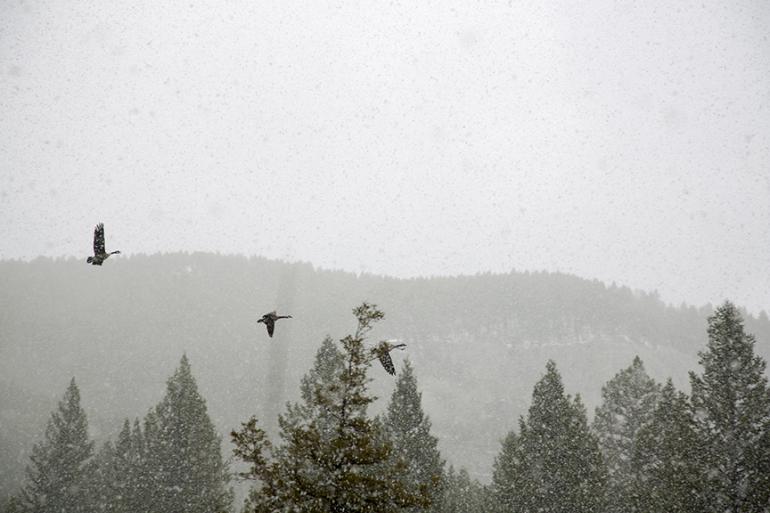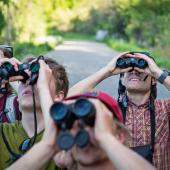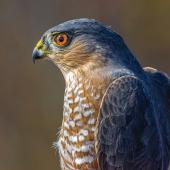Birds of Winter River Walks
"One must have a mind of winter," the poet Wallace Stevens says, to “see the nothing that is not there and the nothing that is.” If you hike along the frosty water outside Bozeman this winter, you won't need much imagination to discover lots of bird activity beneath the glitter of the January sun. Winter is a good time for beginning birders. Easy to see and identify, though less abundant and in minor keys, winter birds will accompany you along the creeks where yellow grasses and brush and even tiny insect hatches line the banks.
Arriving from the tundra in late October, little groups of tree sparrows in the sparkling streamside grasses can always be counted on. And a dark and fatter song sparrow often joins them. Of course ravens with their wild croaks and crows and swaggering magpies will be around all afternoon. Maybe siskins, redpolls, house finches, and evening grosbeaks will drop in. If large fields parallel the banks, the tinkling music of horned larks can surprise you, and, overhead, watch for a late red-tailed hawk, for a rare harrier, or for the very white and commonplace rough-legged hawk, with dark wing spots at the wrists and aristocratic face, hovering in one spot above the mouse below or sitting on the phone pole nearby. A bald eagle, quite regular on the winter Gallatin, may also share the airspace as he looks for old fish. Crisscrossing the fields and sitting in low trees, a northern shrike hunts for unwary small things, which are often found later impaled on the barbed wire at the car. He shares the prey base with a crafty sharp-shinned hawk, sulking over in the bushes. In the alders along the water, the chickadee clans, both black-capped and mountain species, provide more understated music. Where a few firs and spruce crowd out the rose hips, listen for the golden-crowned kinglet’s jingle and perhaps the nuthatch’s nasal toy trumpet notes as he goes headfirst down the branches. Woodpeckers in chaste winter black and white, the downy and the hairy, inch up tree limbs. Another woodpecker, a wintering flicker huge in its brown garb, black round spots, and shocking flashes of red may be up there too, or, more likely, near the ground looking for anything that moves. Tiny brown creepers might creep up the same limbs. And if berry bushes of any kind still have fruit, sleek bohemian waxwings in very noisy flocks strip them quickly, then as their name implies move on and out. Sometimes only a Townsend’s solitaire is left in the landscape, at the exact top of a once-laden juniper bush.
Out on the water as evening falls, restless goldeneye ducks, the Barrow’s and the common, move in black and white rafts. Common mergansers dive for trout with saw-toothed bills. Lines of geese, their cries never understated, point toward the west. A horned owl slides in to watch the day’s end. And before you see him you will hear the water dipper, as he bobs and weaves on iced rocks looking for the fisherman’s summer stonefly nymphs. His song, from that bridge over there, is a soft tumbling string of notes, unutterably comforting in the still black and blue of a cloudy December dusk.













